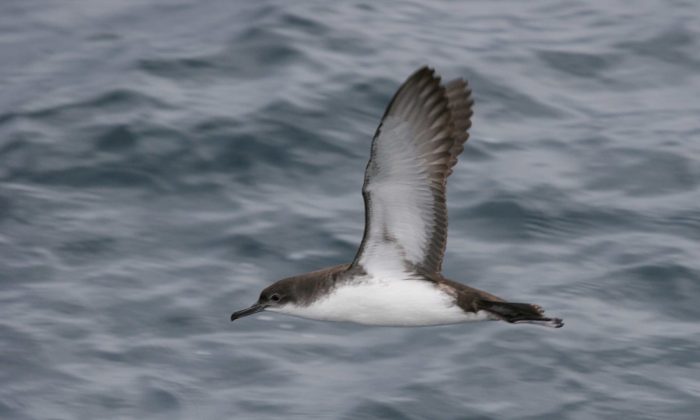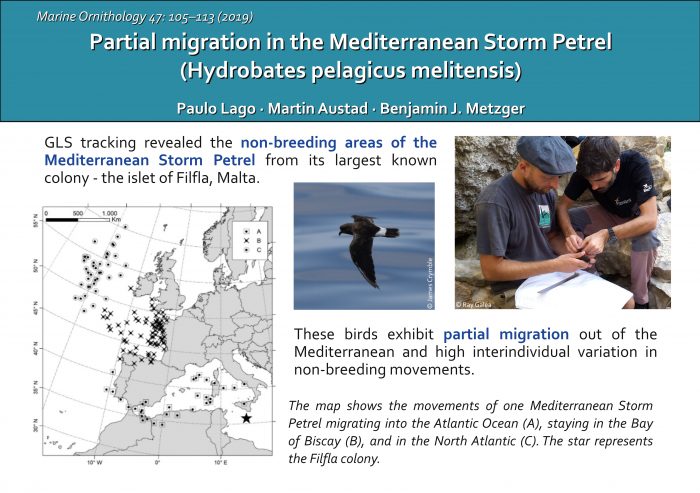In the last weeks exciting research carried out by BirdLife Malta under two successive seabird projects: the LIFE+ Malta Seabird Project (2011-2016) and the LIFE Arċipelagu Garnija project (2015-2020), was published in international scientific journals.
The two studies reveal for the first time movements at sea during crucial periods in the life cycle of two seabird species nesting in Malta’s cliffs and islets: the Yelkouan Shearwater (Puffinus yelkouan) and the Mediterranean Storm-petrel (Hydrobates pelagicus melitensis).
They only approach land in order to nest, mate, and raise a chick during the breeding period, while spending most of their time travelling and foraging out in the open sea. To understand their at sea movements at different times of the year is therefore crucial for their conservation and to protect marine areas which they use. This is only possible due to the technological advancement and miniaturization of tracking devices only ammounting to a tiny fraction of the birds’ bodyweight.
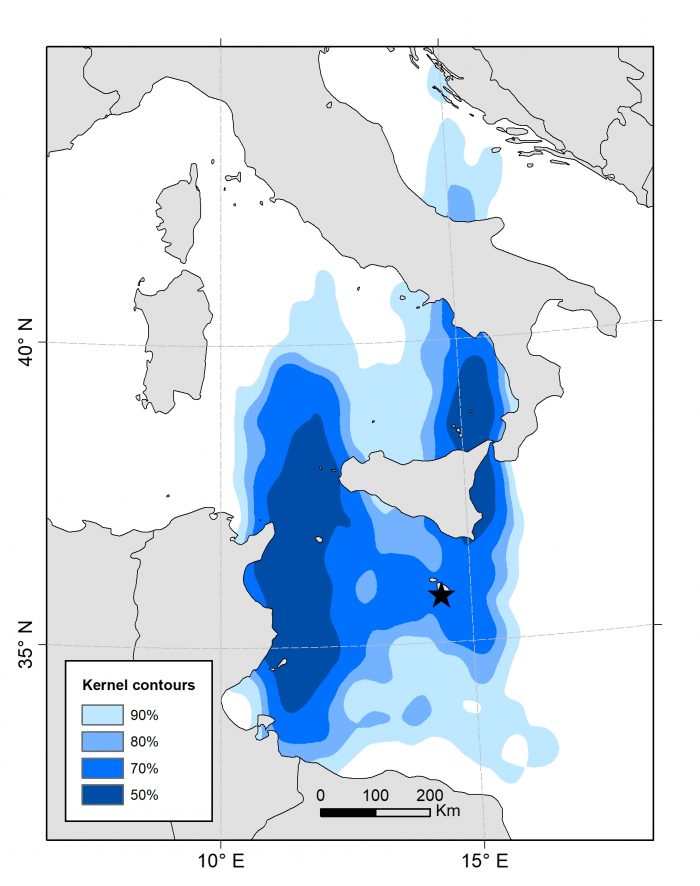
For the Yelkouan Shearwater (Garnija) we published the first movements of this species during what is called the pre-laying exodus (PLE) – a period of time when females of the species “disappear” from their breeding colonies to spend around two weeks foraging at sea while developing their single, large egg. Consequently, conditions encountered during this time have a direct impact on the population’s breeding success since each female only lays one egg each year. Females travel further than males in this period, and surprisingly visited areas different to those shown to be important for foraging Yelkouan Shearwaters during chick-rearing indicating that they might be searching for specific resources needed for egg development. At the moment, after a long incubation period Yelkouan Shearwater eggs have hatched in the cliff colonies around the Maltese Islands marking the start of an even busier period for the parents.
The Mediterranean Storm-petrels (Kanġu ta’ Filfla) were fitted with tiny geolocators that log light levels detecting therefore sunrise and sunset times from which location is calculated. Such devices function for several months allowing to find out not only where these birds forage during their breeding period but also where they migrate to during the winter. Most birds in the study chose to stay in the central Mediterranean, but two birds went for trips to the western Mediterranean reaching the Spanish coast. One birds made an even more astounding journey, leaving the Mediterranean Sea and spending several weeks in the North Atlantic before returning to its colony on Filfla! Currently, Storm-petrels will again be returning to their colonies to start breeding.
The full paper on “Pre-laying movements of Yelkouan Shearwaters in the Central Mediterranean” (by Marie Claire Gatt, Paulo Lago, Martin Austad, Anne-Sophie Bonnet-Lebrun and Benjamin J. Metzger) published by the Journal of Ornithology can be read here while the paper about “Partial migration in the Mediterranean Storm-petrel” (by Paulo Lago, Martin Austad and Benjamin J. Metzger) which was published by Marine Ornithology can be found in full here.
You can also read about these findings in the feature published by the Times of Malta summing up the results of these important scientific studies.
By Martin Austad, LIFE Arċipelagu Garnija Project Warden Leader
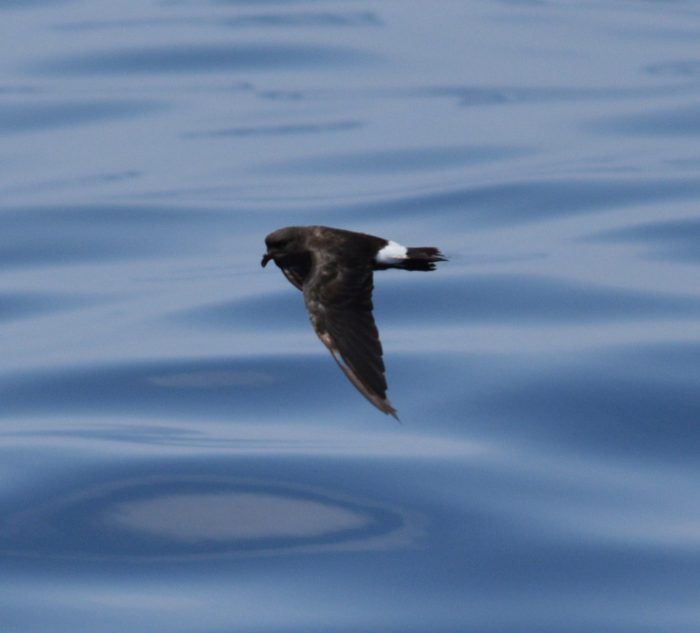
Mediterranean Storm-petrel in flight (Photo by James Crymble) 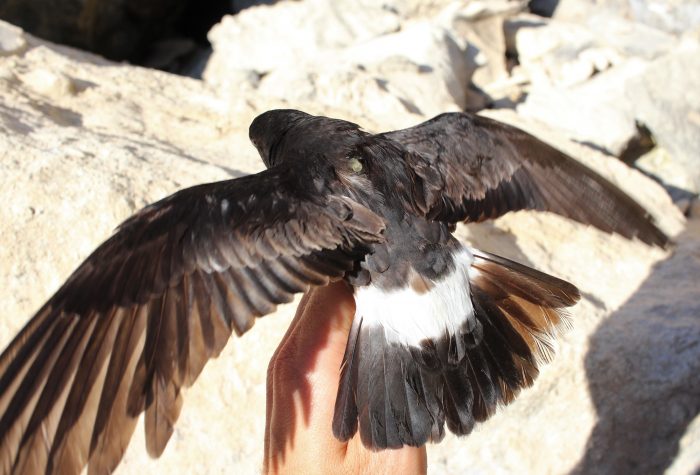
Storm-petrel with the GLS on the back on retrieval in Filfla in 2017 (Photo by Paulo Lago) 
Researchers from LIFE+ Malta Seabird Project and LIFE Arċipelagu Garnija project, Ben Metzger and Paulo Lago, fitting a Mediterranean Storm-petrel with a geolocator at the Filfla colony. (Photo by Raymond Galea) 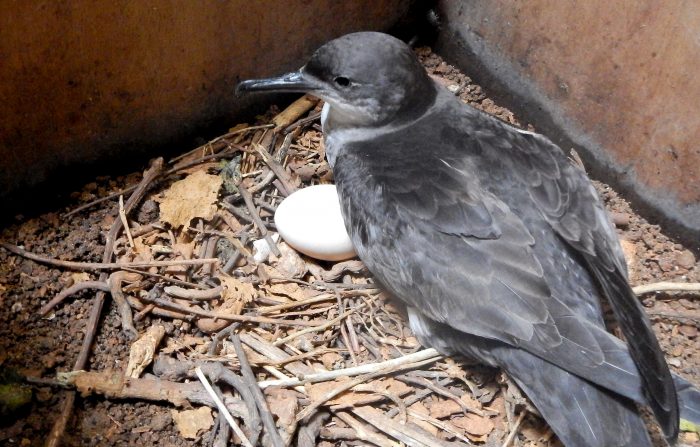
Female Yelkouan Shearwaters return to their nests to lay their single egg after their pre-laying exodus which typically lasts around two weeks during which the birds can travel over 300 kilometres. (Photo by James Crymble)

